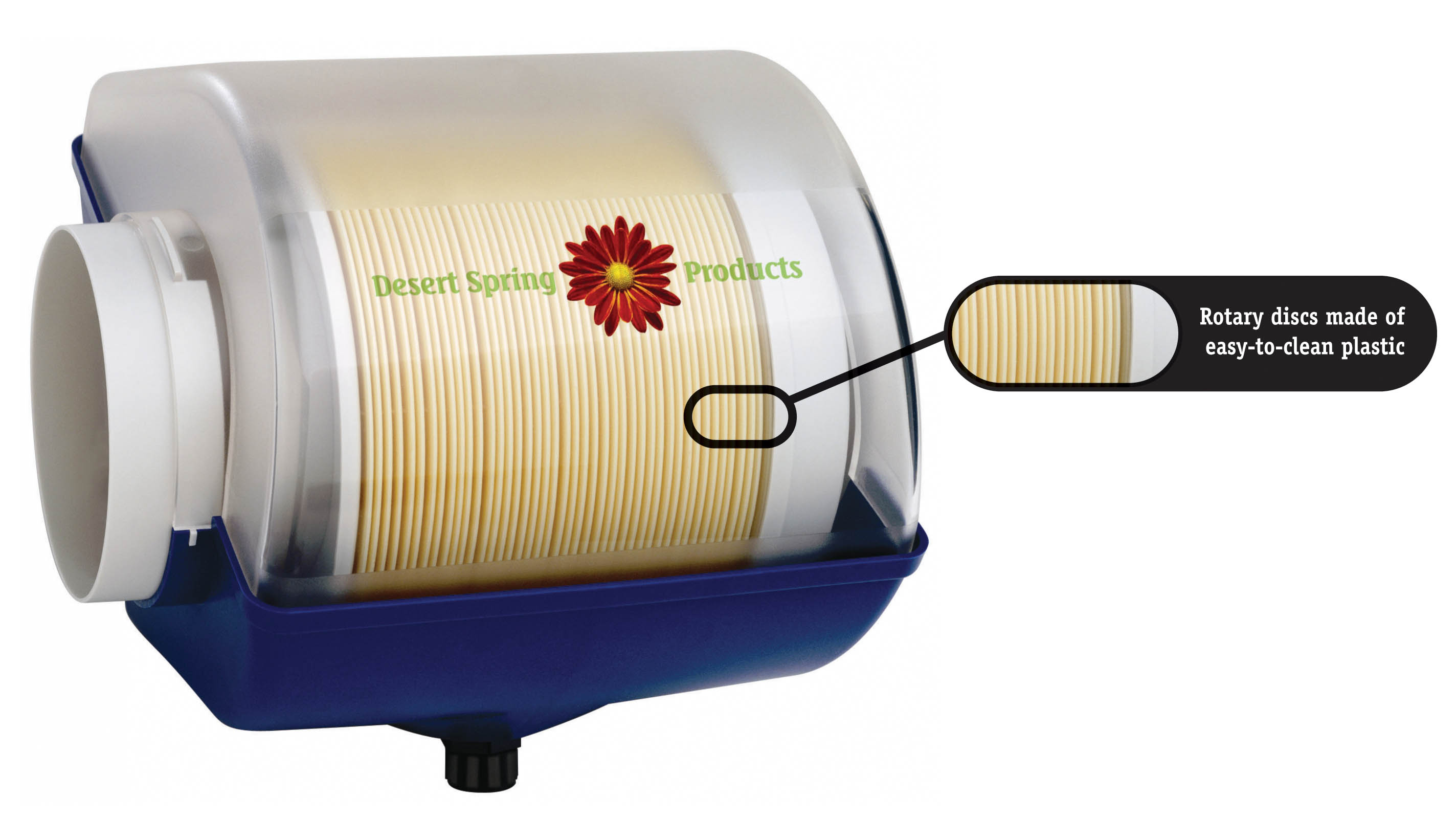I like this type a lot, but I have had problems. They are a closed box unit that mounts in the side of the cold air return duct just before that air goes through the dust filters and into the circulating air fan. They have a round drum of foam turned by a small motor in a tray of water. There is a flexible plastic hose connected to a port in the hot air discharge plenum above the furnace and feeding into the box. So some of the hot air blown by the fan flows through the hose and the wet drum into the cold air return duct, adding moisture to the air flow. On mine, the humidistat control unit in the upstairs room simply turns on and off the power to the drive motor for that rotating drum, so when the room humidity goes above setpoint the drum stops and the feed of moist air becomes a feed of warm but dry air until the system requests more moisture.
I have not observed any significant build-up of mold in air ducts from this, although a SMALL amount of dust accumulates slowly in the cold air return duct just downstream from the humidifier before that duct enters the dust filter. I clean that out once or twice a year. However, there IS a significant build-up of light brown sludge in the water tray inside the humidifier which I'm sure contains water hardness minerals plus maybe biological growth. So that I clean out more often. About once a year, maybe less often (probably related to water hardness, and we have soft water) the foam sleeve on the drum gets stiff and crusted with water sludge and needs replacement.
The water in the open tray inside the humidifier is fed by a small tube from a water line, with a shut-off valve for servicing. The humidifier has a float-based tray refill valve that keeps the water level where you need it. The most common problem I've had with them is this valve. It tends to wear out and then it cannot stop water from filling the tray, and that overflows onto the floor. Of course you can replace that valve assembly (sometimes hard to find the right part for your humidifier), but until you notice the problem it can make a big wet mess around the furnace!
I have found that the fan-and-drum style room humidifier does put humidity into the air in a room and that will move around your whole house, but I find that is not enough water addition for a whole house when the air is dry, especially in winter. The furnace-mounted "power humidifier" design (above) can add LOTS of moisture to get your humidity up there.
Obviously there is a "right" air humidity level in your home. In summertime that's about 40% Relative Humidity for many people, but in the winter you usually aim for lower. This is not solely for mold. It is mainly because 40% RH will cause significant condensation on cold surfaces, especially windows and maybe around doors. Now, that might be a source of mold growth, but it is a messy situation and MAY also lead to rot of wood frames. So in winter you set your RH target lower to avoid that condensation, often in the 30% range or lower.



